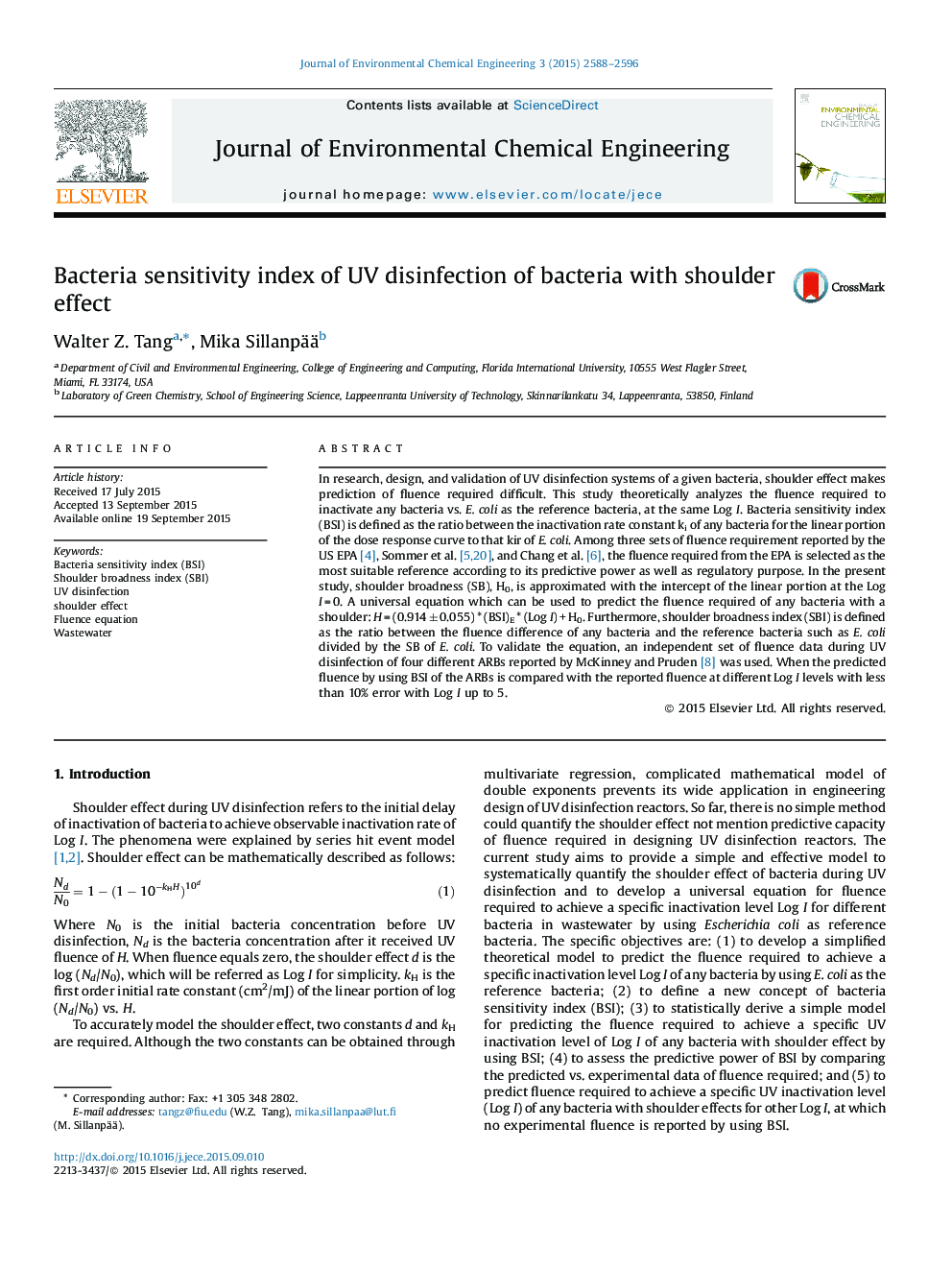| Article ID | Journal | Published Year | Pages | File Type |
|---|---|---|---|---|
| 222064 | Journal of Environmental Chemical Engineering | 2015 | 9 Pages |
•BSI was used to rank the UV inactivation sensitivity of 12 different bacteria.•Relative fluence and BSI was correlated and validated by statistical analysis to derive the universal fluence equation.•Shoulder broadness index was also used to correlate with BSI.•BSI was used to predict the fluence required during UV disinfection of antibiotic resistant bacteria with maximal error less than 10%.•BSI was also used to estimate the fluence required during UV disinfection of antibiotic resistant bacteria at 5 Log I.
In research, design, and validation of UV disinfection systems of a given bacteria, shoulder effect makes prediction of fluence required difficult. This study theoretically analyzes the fluence required to inactivate any bacteria vs. E. coli as the reference bacteria, at the same Log I. Bacteria sensitivity index (BSI) is defined as the ratio between the inactivation rate constant ki of any bacteria for the linear portion of the dose response curve to that kir of E. coli. Among three sets of fluence requirement reported by the US EPA [4], Sommer et al. [5] and [20], and Chang et al. [6], the fluence required from the EPA is selected as the most suitable reference according to its predictive power as well as regulatory purpose. In the present study, shoulder broadness (SB), H0, is approximated with the intercept of the linear portion at the Log I = 0. A universal equation which can be used to predict the fluence required of any bacteria with a shoulder: H = (0.914 ± 0.055) * (BSI)E * (Log I) + H0. Furthermore, shoulder broadness index (SBI) is defined as the ratio between the fluence difference of any bacteria and the reference bacteria such as E. coli divided by the SB of E. coli. To validate the equation, an independent set of fluence data during UV disinfection of four different ARBs reported by McKinney and Pruden [8] was used. When the predicted fluence by using BSI of the ARBs is compared with the reported fluence at different Log I levels with less than 10% error with Log I up to 5.
